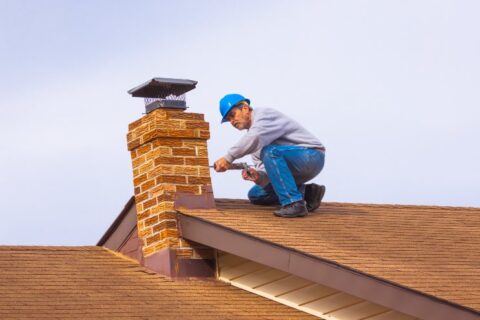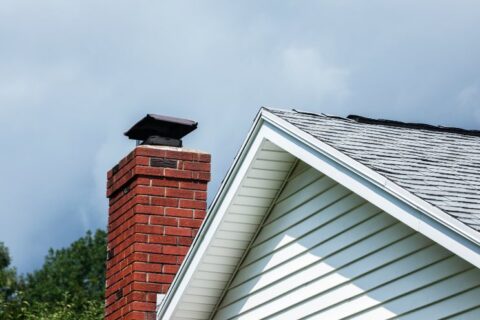10 Most Common Summer Chimney Problems
For most of us, when we think of our fireplaces, we think of cold winter nights in front of the fire. In the summer, for the most part, we don’t give our chimneys a second thought. But did you know that summer can bring a whole set of problems for your chimney and fireplace?
In this article, we’ll discuss the 10 most common problems you need to be aware of this summer.
1. Chimney Leaks
Chimney leaks are one of the most common problems that we see during the summer months. After a big summer storm, water can enter your chimney through cracks and holes, causing damage to the structure and potentially leading to mold and mildew growth. Often, homeowners believe there is something wrong with their roofs. But, if the leak is anywhere near your chimney, it’s most likely the culprit. If you suspect a leak, it’s important to have it repaired as soon as possible. Call Chimneytek for an inspection right away – (410) 796-8450
2. Chimney Cracks
Over time, wear and tear can take its toll on your chimney, resulting in cracks forming in the structure. These cracks can allow water to enter, which can then lead to Chimney leaks as mentioned above. This is one of the reasons that we suggest doing an inspection of the outside of your home throughout the year. If you notice any cracks, no matter how small, it’s important to have them repaired before they get worse.
3. Chimney Liner Damage
The liner is the part of the chimney that actually contains the fire, so it’s important to keep it in good condition. Damage to the liner can result in heat and smoke escaping into your home, as well as creating a fire hazard. Unfortunately, this one is not easy for a homeowner to detect and it is one of the top reasons to have your chimney inspected yearly.
4. Animals Nesting
Believe it or not, animals like birds and squirrels sometimes build nests in chimneys. Not only is this a nuisance, but it can also block the chimney flue and lead to a dangerous buildup of carbon monoxide in your home. If you notice any animals around your chimney, it’s best to have them removed by a professional.
5. Creosote Buildup
Creosote is a byproduct of burning wood and can build up on the walls of your chimney over time. If not removed, it can become a fire hazard. The good news is that this problem can be solved. Chimney sweeping is the best way to remove creosote build-up and should be done at least once a year.
6. Blockages
Blockages in your chimney can be caused by anything from nesting animals to the simple buildup of soot and creosote. Regardless of the cause, a blockage can lead to a dangerous buildup of carbon monoxide in your home. Too often people don’t realize they have a blockage until they try to start a fire in their fireplace and the smoke begins to back up. A simple chimney inspection can detect this problem for you before you start your first fire of the season.
7. Spalling Bricks
One of the more noticeable problems with chimneys is spalling. Spalling is a condition where the bricks on the exterior of your chimney start to flake and peel away. This is usually caused by water damage and can weaken the structure of the chimney. If you notice any spalling, it’s important to have it repaired as soon as possible.
8. Leaning Chimney
Over time, the weight of a chimney can cause it to start leaning. This can be dangerous and expensive as it can cause the chimney to collapse. If you notice your chimney starting to lean, it’s important to have it inspected by a professional to know whether it needs to be repaired or completely replaced. Our team can come out and let you know. We are specialized in this type of job.
9. Damaged Flashing
The flashing is the part of your roof that goes around the Chimney. It’s important to keep it in good condition as it helps prevent water from leaking into your home. If you notice any damage to your flashing, it’s best to have it repaired as soon as possible.
10. Soot Buildup
Soot is another byproduct of burning wood and can build up on the walls of your chimney over time. While it’s not a fire hazard, it can be unsightly and difficult to remove. Most homeowners notice this because their home smells funny. Chimney sweeping is the best way to remove soot build-up and should be done at least once a year.


